Simon & Garfunkel Get a Houston Ballet Jam — Sparrow Is a Triple Act Season Finale That Flies High
Going Out With Plenty Of Range
BY Adrienne Jones //Houston Ballet first soloist Tyler Donatelli, soloist Aaron Daniel Sharratt, and Corp de Ballet dancer Riley McMurray in Ben Stevenson’s "Four Last Songs" (Photo by Amitava Sarkar. Courtesy Houston Ballet.)
Before heading to Japan for its summer tour, Houston Ballet is putting on a confection of three cherished one-acts from their extensive repertoire.
The show takes its title Sparrow from the first work in the program: artistic director Stanton Welch’s eponymous piece set to six songs by folk-rock duo Simon & Garfunkel. The duo’s hugely popular music with its tight, pleasing two-part harmonies sold more than 100 million records and captured the spirit of social change in the turbulent 1960s.
Welch has chosen a mix of Simon & Garfunkel’s peppier songs and dressed the lively cast of 25 in 1960s-style turtlenecks and bell bottoms. Neal Burks, who danced in Sparrow’s 2022 premiere, describes it as “a feel-good ballet.”
Harper Watters gave a great boost of savvy energy to the men’s line, and everyone — from principals to members of the corps de ballet — appeared to be having a great time. They were, to borrow a line from Paul Simon, feelin’ groovy.
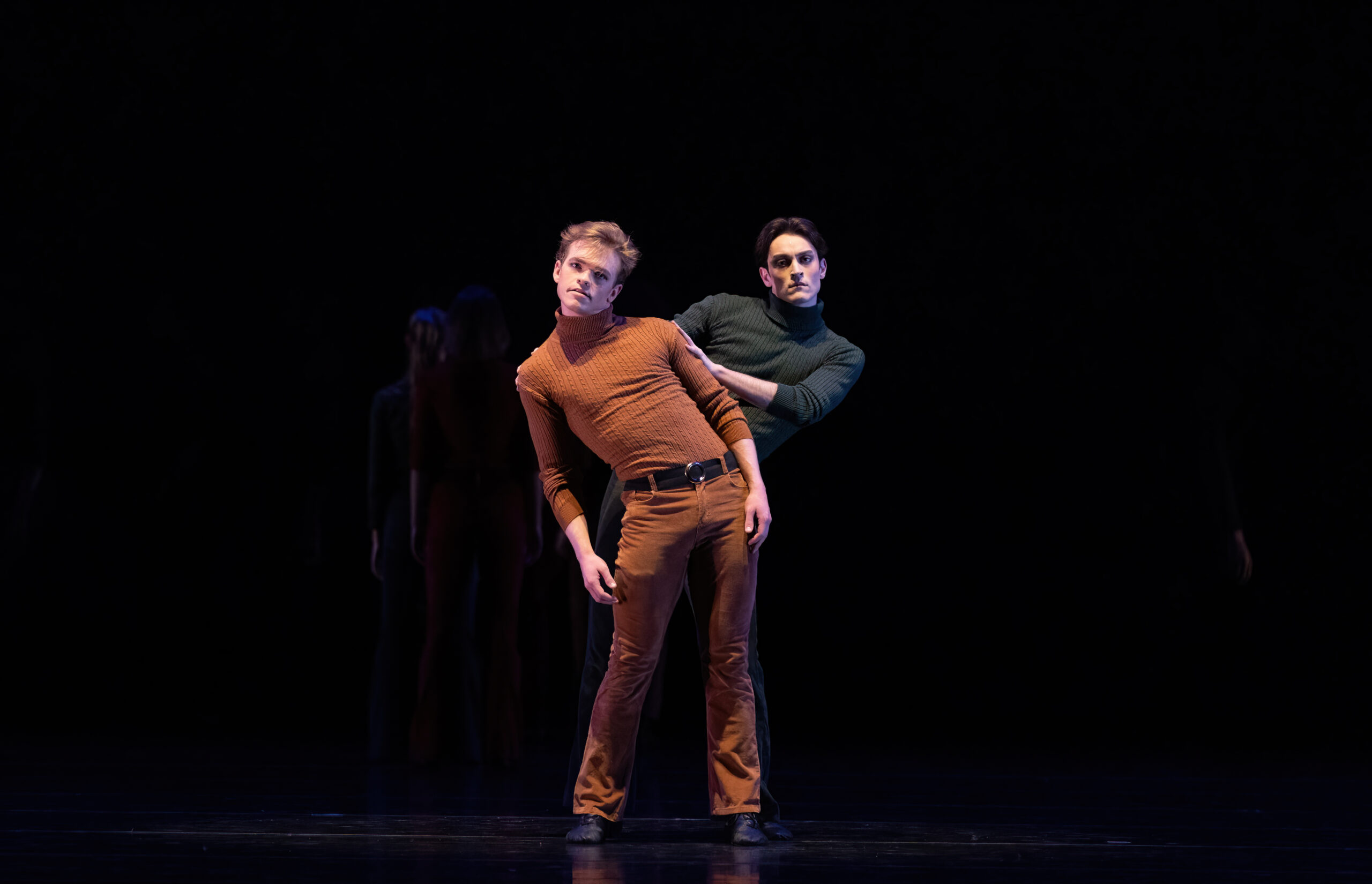
Also on the program is George Balanchine’s Theme and Variations, set to the final movement of Tchaikovsky’s Suite No. 3 for Orchestra in G major. The sparkling homage to the grandeur of the Imperial Russian Ballet is infused with modern speed and energy that make it one of the hardest and demanding ballets to dance — and one of the most colorful and delightful to watch.
But the night belonged to legendary choreographer Ben Stevenson and his gorgeous ballet dubbed Four Last Songs. Part of the tremendous success of the performance is surely due to his inspiring presence in Houston for rehearsals.
British-born Stevenson’s association with Houston Ballet is historic. He was appointed artistic director in 1976, a position he held until 2003. During that time, he created ballets, grew the company and brought it to national prominence, winning many awards along the way. In 1999, Queen Elizabeth II named him an Officer of the Order of the British Empire (O.B.E.).
Stevenson says he was inspired to create Four Last Songs as a tribute to Winifred Wallace following her death in 1977. Wallace was a founding board member of Houston Ballet and instrumental in creating the volunteer auxiliary Houston Ballet Guild.
The songs referred to in the title are literally the last four (Vier letzte Lieder) written by the great composer Richard Strauss in 1948, a year before his death at age 85. It is a monumental work of transcendent beauty that beckons viewers into another realm – the sounds and words of memory that takes one from the bloom of youth with its promise and loveliness to the closing of a lifetime.
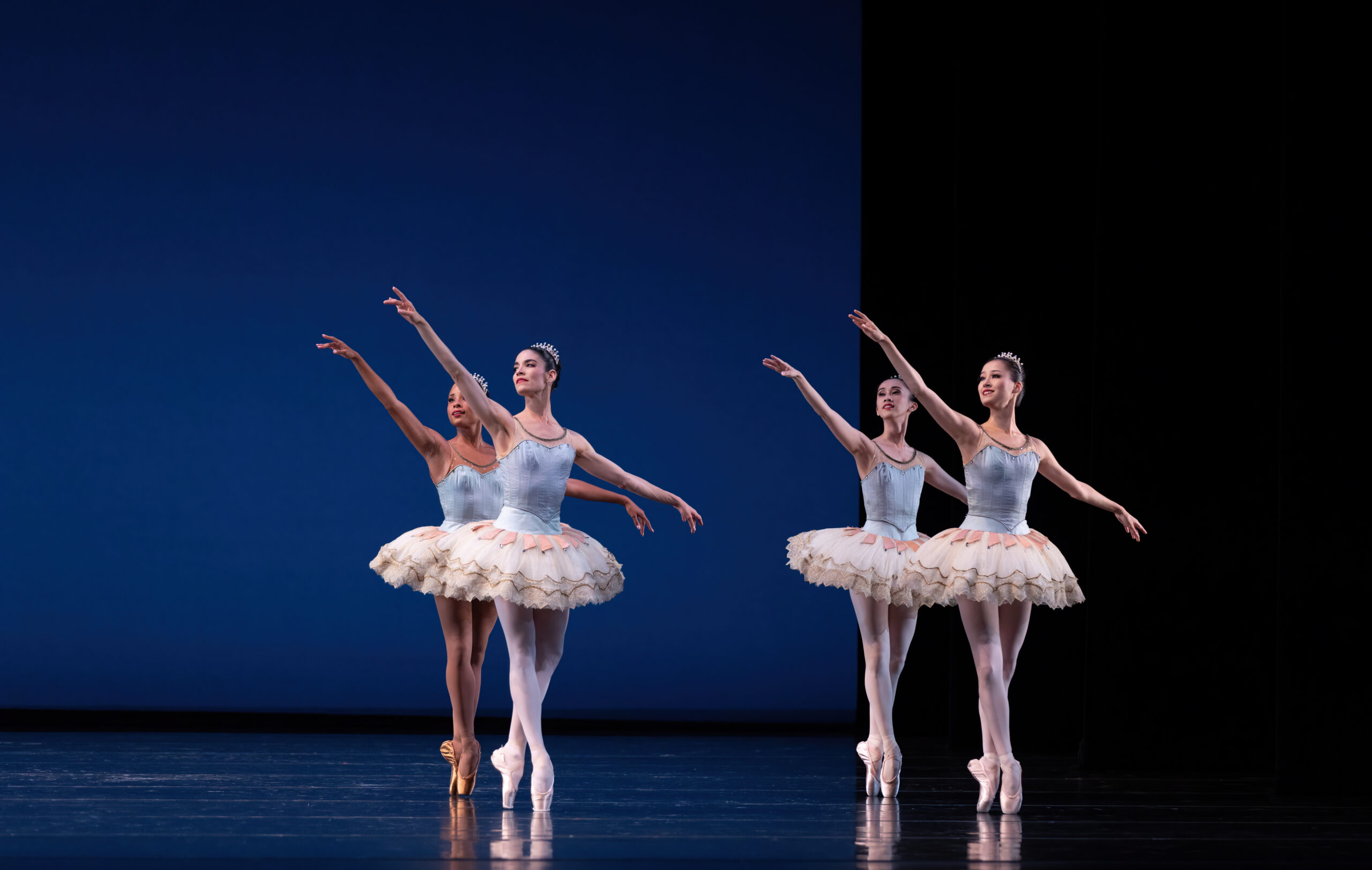
Strauss wrote the songs as a final love letter to his wife of 60 years, distinguished soprano Pauline de Ahna, who performed many of his works to great acclaim. Lyrics for the first three songs — Spring, September, and Going to Sleep — are settings of poems by Hermann Hesse. The last song, At Sunset (sometimes translated At Gloaming), was written by Joseph von Eichendorff.
One can only approach this work by Strauss with the reverence Stevenson brings to it — marrying the movement of every dancer with sensitivity to the poignancy of the music. It is rare for its beauty and nobility: a work of genius and a privilege to experience.
One of Stevenson’s personal charms is his humor and modesty. He recently teased a Dance Talks audience: “If you don’t like the choreography, you can close your eyes and listen to this wonderful music.”
Gracing the music is the strong, resonant voice of soprano Nicole Heaston. Even from the pit, Heaston’s rich timbre commands attention as the lyrics unfold in a progression from the loveliness of a spring day to the approaching metaphorical sunset. Audiences may remember her powerful performance as Claire in Houston Grand Opera’s Breaking the Waves in April.
The curtain opens against a towering backdrop of white silken material gathered into scallops. Are these clouds? Is this heaven? Wherever it is, it speaks of peace.
Dancing Into Spring
Dancers Chae Eun Yang and Song Teng were glorious in their tender rendering of Spring, a season of pairings. Yang was pure grace as she melted against Teng in their pas de deux, evoking an effortless chemistry between them that animated springtime’s eternal call to love.
“In dusk-dim vaults I’ve long dreamed of your trees and blue skies…
Now you are revealed, glittering, adorned, bathed in light
like a miracle before me.
You know me once again, you beckon to me tenderly…”

Ballet Channeling Autumn
September is a reflective tone poem in an autumnal mood. Beckanne Sisk, Eric Best, and Naazir Muhammad formed a harmonious pas de trois. They were a celebration of woven shapes and wistful loveliness that mirrored, fused and extended as if reaching for — or perhaps pulled toward — something unseen.
The piece showcases the blending of voice and music as the mood shifts from springtime’s “life’s own sweetness returned again” to a reflection on nature’s slow winding down and a seeming acceptance of the end of life:
“The summer, surprised and weak, smiles at the fading garden-dream.
Yet he lingers still, among the roses, yearning for rest.
Slowly he closes his wearied eyes.”
Here, Strauss gives us perhaps his most beautiful solo for French horn, likely in memory of the instrument his father played. But we know the “weary eyes” are Strauss’ own.
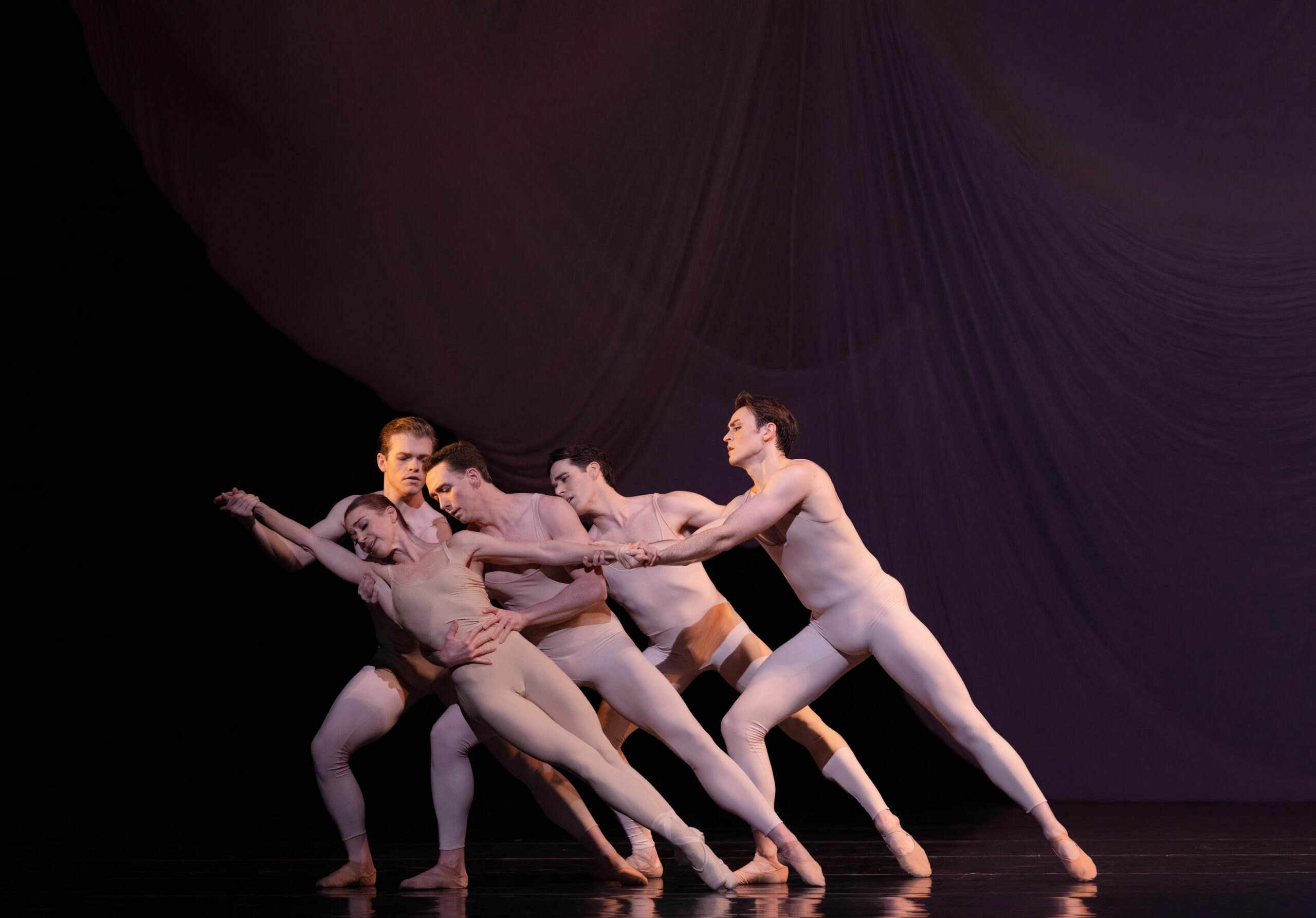
Beautiful Classical Music
It is foolish to compare greatness, but the third song, Going to Sleep (Beim Schlafengehen), must be among the most beautiful compositions in all of classical music, and dancers Aoi Fujiwara and Angelo Greco rose to meet it. Each a virtuoso, they were unforgettable as partners in a heartrending and sublime pas de deux. The song is about a sort of drifting away to sleep before arriving at the end of our earthly journey.
Fujiwara is an exquisite dancer. She is like a feather, and Greco dances with her as if with a butterfly. A dynamic addition, he joined the company as a principal dancer in 2024 from La Scala Ballet and more recently San Francisco Ballet.
In notes written for Houston Ballet by Carl Cunningham, Stevenson writes: “The man and the woman are very much in love, but she senses that one of them will die first. This piece conveys the feeling of losing one’s mate and being left alone.”
“Now the day has wearied me,” the soprano sings. “My ardent desire shall happily receive the starry night like a sleepy child.”
The piece’s famous violin solo is like a lullaby that breathes with quiet intensity. Houston Ballet Orchestra first violinist Denise Tarrant, always wonderful, played with supreme expression, implying the intimacy of the bond between the couple.
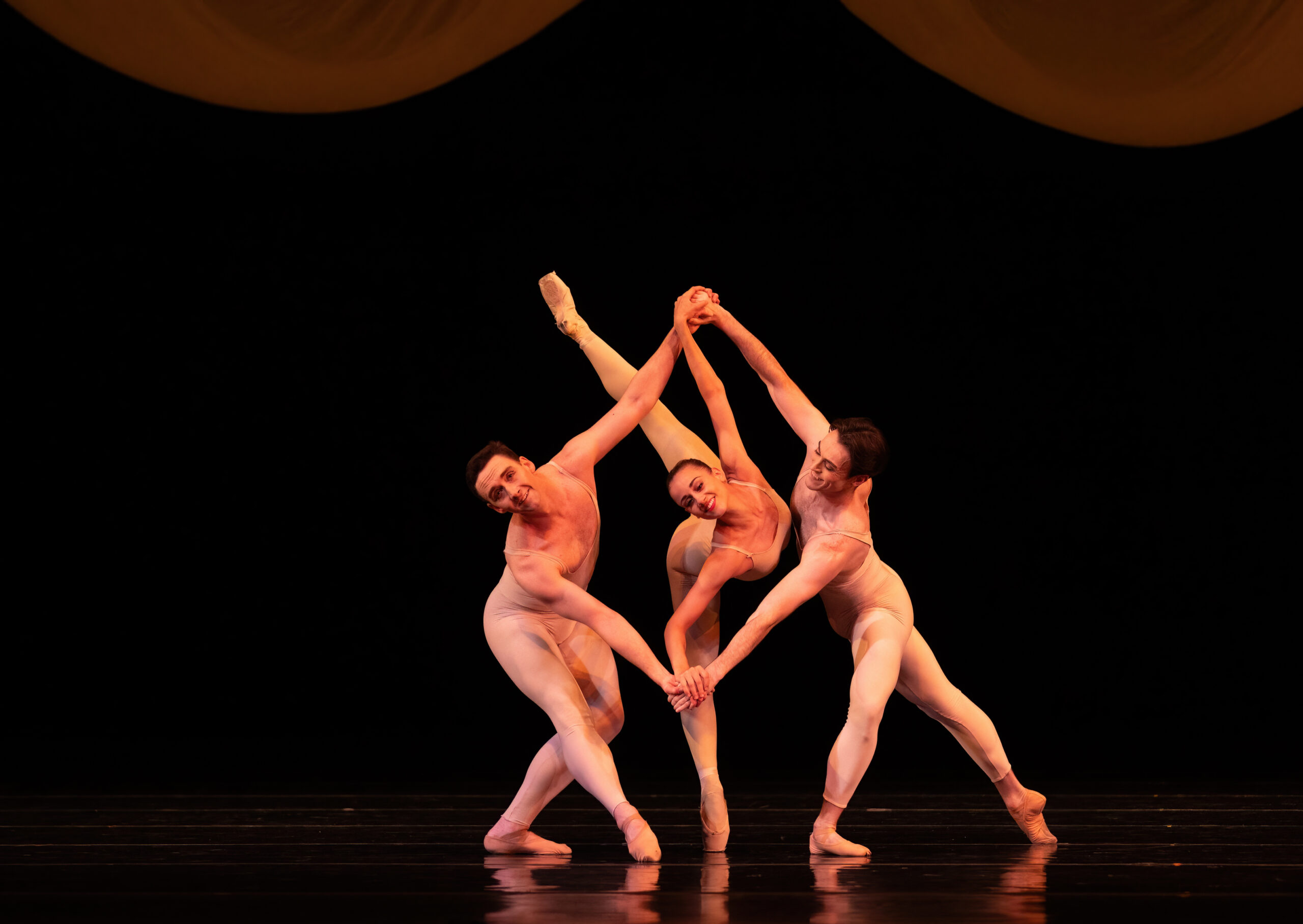
Hand In Hand
The final song is set to Joseph von Eichendorff’s poem, At Sunset (Im Abendrot). It is profoundly moving, like the music Strauss wrote for it and the dance Stevenson created.
In the poem, a husband and wife are united, a couple who have traveled through life together “hand in hand” through times happy and hard, but the time has come to “pause at last above the silent land.”
“From our wanderings, let’s now rest in this quiet land…
Soon it will be time for sleep.”
As if sitting next to us reminiscing about his life, Strauss touchingly references the “transfiguration theme” from his tone poem, Death and Transfiguration, written 60 years before. This occurs during and after the soprano’s final line — Is this perhaps death? — but it is played now with an English horn.
Alone onstage, Estheysis Menendez commanded the space in a mesmerizing performance of Strauss’ musical farewell. The lyrics, music, choreography, and Menendez’s beautifully executed interpretation were a seamless blending of sadness and acceptance, serenity and peace. As she is borne aloft in lifeless sleep by dancers who have appeared like ciphers, she disappears into the wings, and the curtain falls.
Requiem.
Houston Ballet’s “Sparrow” continues through this Sunday, June 22 at the Wortham Theater Center. The Saturday evening performances begins at 7:30 pm; Sunday matinee at 2 pm. For tickets and information, go here.









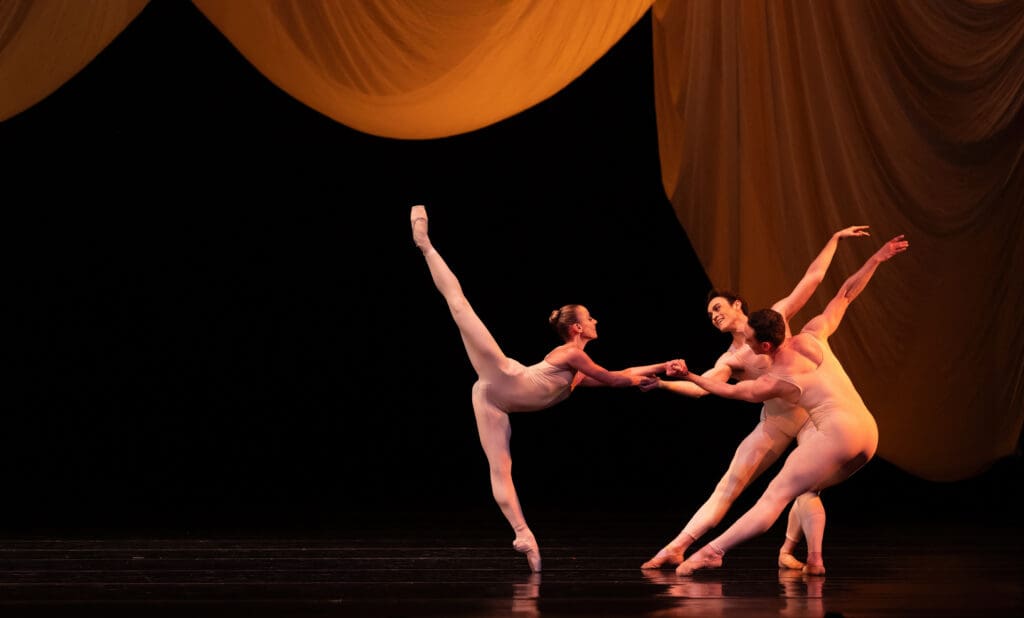


































_md.jpg)
_md.jpg)











_md.jpg)















_md.jpg)











